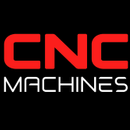Fabrication and the Supply Chain: Navigating Challenges in 2025

Fabrication and the Supply Chain: Navigating Challenges in 2025
As we approach 2025, the fabrication industry is poised to face a variety of supply chain challenges that could significantly impact operations, production timelines, and profitability. From material shortages to geopolitical uncertainties, these challenges demand innovative strategies and proactive measures. This article examines the key supply chain challenges facing the fabrication industry and offers actionable strategies for overcoming them.
1. Key Challenges in Supply Chain Management
A. Material Shortages
One of the most pressing issues in the fabrication industry is the ongoing material shortages exacerbated by global disruptions, including the COVID-19 pandemic and supply chain bottlenecks. These shortages can lead to increased costs, project delays, and compromised product quality.
B. Transportation and Logistics Disruptions
Global shipping and transportation disruptions have become increasingly common, affecting the timely delivery of materials and components. Increased freight costs, delays at ports, and a shortage of drivers can hinder supply chain efficiency.
C. Geopolitical Risks
Geopolitical tensions, trade wars, and tariffs can create uncertainty in sourcing materials from international suppliers. Changes in trade policies can lead to increased costs and logistical challenges for fabrication businesses.
D. Technological Integration
While technology offers many advantages, the complexity of integrating advanced systems into existing supply chain operations can pose challenges. Many companies struggle with adopting new software solutions, automation, and data analytics capabilities.
2. Strategies for Overcoming Supply Chain Challenges
A. Diversify Supplier Base
To mitigate the risks associated with material shortages and geopolitical uncertainties, fabrication companies should diversify their supplier base. Establishing relationships with multiple suppliers—both domestically and internationally—can enhance resilience and flexibility.
- Local Sourcing: Whenever possible, prioritize local suppliers to reduce transportation costs and lead times. Local sourcing can also enhance collaboration and communication.
- Backup Suppliers: Identify backup suppliers for critical materials to ensure continuity in the supply chain in case of disruptions.
B. Implement Advanced Inventory Management
Effective inventory management is crucial for navigating supply chain challenges. Utilizing advanced inventory management systems can help fabrication companies optimize stock levels and reduce excess inventory.
- Just-in-Time (JIT) Inventory: Adopt JIT practices to minimize holding costs and ensure that materials arrive precisely when needed, reducing the risk of shortages.
- Real-Time Monitoring: Use technology to monitor inventory levels in real time, allowing for timely reordering and better decision-making.
C. Enhance Transportation and Logistics Planning
Improving transportation and logistics planning can help mitigate delays and reduce costs.
- Collaborate with Logistics Partners: Work closely with logistics partners to develop efficient transportation strategies, including optimizing routes and consolidating shipments.
- Utilize Technology: Implement transportation management systems (TMS) to track shipments and provide real-time updates on delivery statuses.
D. Leverage Technology and Data Analytics
Investing in technology and data analytics can improve supply chain visibility and decision-making capabilities.
- Supply Chain Management Software: Implement software solutions that provide insights into supplier performance, inventory levels, and market trends, allowing for better planning and forecasting.
- Predictive Analytics: Use predictive analytics to anticipate demand fluctuations and potential disruptions, enabling proactive responses.
E. Focus on Sustainability
Sustainability is becoming increasingly important in supply chain management. By adopting sustainable practices, fabrication companies can reduce costs and enhance their reputation.
- Eco-Friendly Materials: Source materials from sustainable suppliers and consider incorporating recycled materials into fabrication processes.
- Sustainable Transportation: Explore options for reducing transportation emissions, such as optimizing delivery routes and utilizing eco-friendly vehicles.
3. Future-Proofing the Supply Chain
A. Build Strong Relationships with Suppliers
Establishing strong, collaborative relationships with suppliers can enhance communication and foster trust. Regularly engage with suppliers to discuss challenges and opportunities, creating a partnership that can withstand market fluctuations.
B. Stay Informed on Industry Trends
Keeping up with industry trends and market conditions is crucial for adapting to changes in the supply chain landscape. Participate in industry forums, attend trade shows, and subscribe to relevant publications to stay informed.
C. Invest in Employee Training
Equipping employees with the skills and knowledge to navigate supply chain challenges is essential for long-term success. Provide training on new technologies, inventory management practices, and supply chain best practices to enhance overall efficiency.
Conclusion
As the fabrication industry navigates the complexities of supply chain management in 2025, embracing proactive strategies and leveraging technology will be key to overcoming challenges. By diversifying suppliers, enhancing inventory management, improving logistics, and focusing on sustainability, fabrication companies can build resilient supply chains that adapt to changing market conditions. Future-proofing the supply chain requires continuous improvement and a commitment to innovation. By staying informed and investing in relationships, technology, and employee training, fabrication businesses can position themselves for success in an increasingly competitive landscape.


